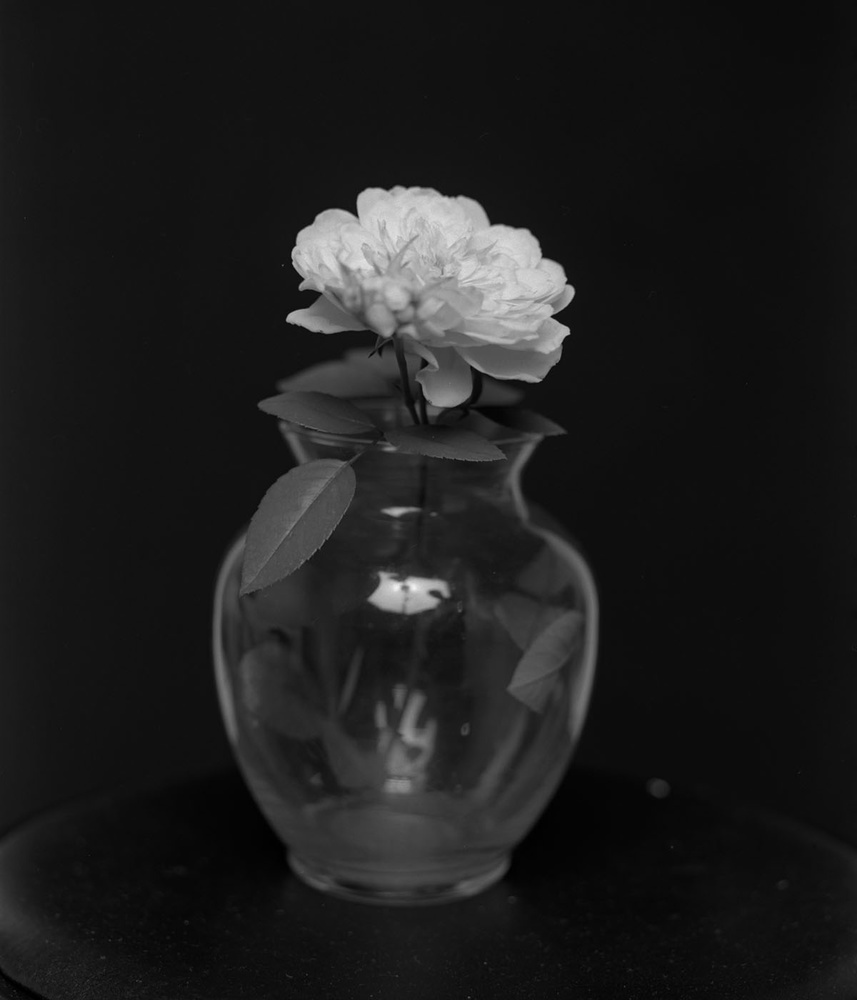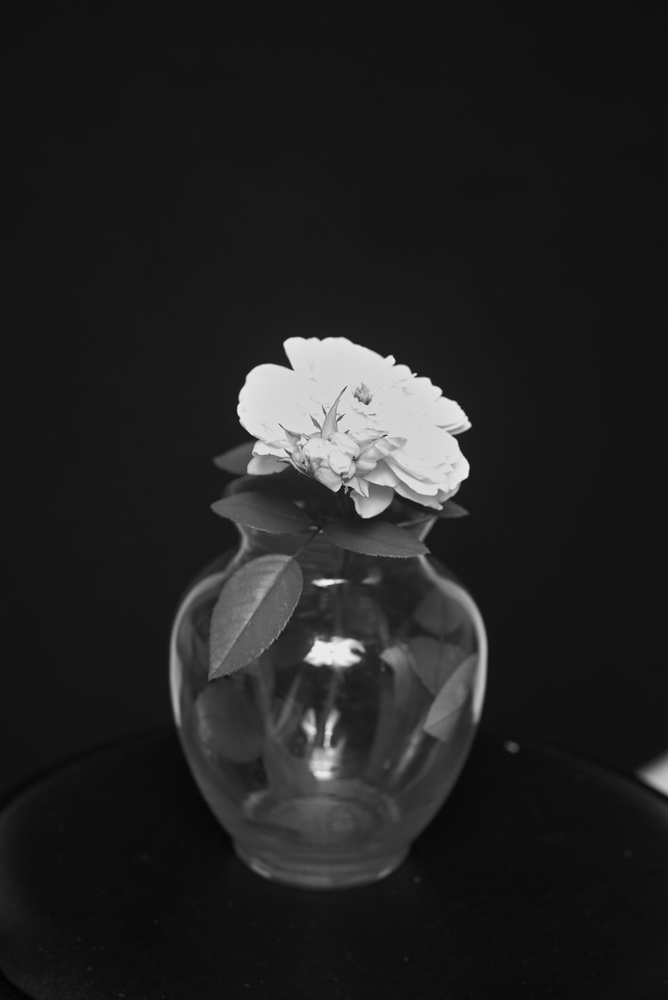When touting the many virtues of film, people frequently mention the power of negatives in the highlights. But what does that mean, exactly, and how does its strength compare to its digital brethren? To find out the differences, I shot a demanding subject with both digital and black and white film, severely over and underexposing. How did they stack up against each other? Read on to find out!
The Contenders
In choosing the two mediums to compare, I went with convenience! Of course, it helps that the film and digital camera used both produce top notch imagery so both mediums are putting their best foot forward. I converted the digital image to black and white using straight desaturation, as I didn't want to boost contrast and blow the highlights prematurely. In post production for both images, I adjusted levels, and with the digital image I attempted highlight restoration in Capture One 9.1.2. The images appear flat (especially the film) because I didn't want to apply a contrast curve. Film images require some love in post, too! But for these purposes, it's more useful to retain as much info as possible. Exposures were metered with a Sekonic 308B meter.
Film: Fuji Neopan Acros 100
In the film corner, I chose Fuji Neopan Acros 100, a slow speed film with extremely fine grain and an almost digital-like rendering. I didn't want to choose a film that had too much of its own character, such as Tri-X, that might confuse the perception of the results. I chose the 120 film size as well for its ease of scanning and lack of grain at enlargement sizes. Acros is also fairly middle of the road in tonal rendition, not being too contrasty nor too flat. I used Kodak XTOL as my developer for two reasons: it's gives a wonderfully fine grain and it's the developer I use almost every day.

Correct Exposure, no sharpening. The tones look fine. Of course,the image is flat as I haven't adjusted the scan for aesthetics.

One stop overexposure, levels adjusted. Highlights are fine.

Two stops overexposed, levels adjusted. No problem.

Three stops. I'm noticing a trend here.

Four stops over. Adjusted levels, beautiful tones. No problems. That's latitude.
Digital: Nikon D610
In the digital camp, I used my Nikon D610. Now, I know it's not the latest and greatest, but according to DxOMark, it's got 14.4 stops of dynamic range, only .3 less than its big brother, the D810. So it's a performer in the dynamic range department, no doubt. I used the same metrics with the digital file, shot in raw, only levels adjustments and a highlight adjustment to attempt to bring them back. Let's see how it did!

D610 Correct exposure. Lookin good!

One stop overexposed, levels adjusted, highlights brought back in Capture One Pro 9.1.2. No prob.

Two stops overexposed. Uh oh. Levels adjusted, highlight restoration pushed to max, but the image is already falling apart.

Three stops overexposed. The hits keep on coming.

Four stops overexposed. yeah, no.
Conclusions
The highlight latitude in negative film is just amazing. That goes for color negatives as well! Digital dynamic range has improved by leaps and bounds over the last few years, but in the highlights department, negative film simply crushes it. It's no wonder it's still so popular for shooting weddings. White dresses and bright sunlight are no problem for a halfway decent negative stock. That said, however, the digital absolutely trounces film in shadow recovery. The film image turns to mush if you try to push the shadows too far. Perhaps that's an article for another time. In the meantime, though, take a roll of negative film, go outside in the bright sunlight and shoot with confidence. When in doubt, overexpose!







Hence why you expose for the shadows when shooting negatives and expose for the highlights for positive film and digital.
soooort of... if you put your highlights in zone 5 on a digital camera, your deep shadows are going to be a mess. Even if you manage to recover detail, even the best sensors do have limits. So it really depends on the range of tones in the scene. So yeah, you can expose directly for that sunset and bring back the shadows, but they're going to take a severe hit in quality.
Obviously it will always depend on the tonal range of the scene you want to capture. After all, there would be no need for HDR if we would always capture all the tones in any scene.
But the photographer shooting any scene will also (or at least should) take into account the range of tones in the scene and make creative decisions as to how they want that scene to look. Once that is done is when the adage comes into play.
If you know you want your scene to look a certain way when shooting film you expose so that the shadows will have the detail you want since you have much more room for bringing out the highlights when processing in the darkroom, much the same way that when shooting with digital I know that I have to be careful about blowing my highlights, knowing that if they are properly exposed I can bring up the shadows significantly in post.
Of course! I just want to be clear so that people who are starting out don't get the wrong idea. It's easy for experienced folk to take the next step in logic, but sometimes when you're starting out the answers aren't so obvious. Your expertise is greatly appreciated, though!
I had finished shooting a roll of Kodak TMAX 100 and loaded Kodak BW400CN in the camera. Except that I forgot to change the ISO. The overexposed photos were "okay", maybe a "meh". I intentionally underexposed BW400CN at ISO 1600 and the photos looked pretty good.
I am a little confused here. You don't say it explicitly, but I assume that you develop the negative, scan it, and then use post-processing digital tools, and never actually print the photo, correct?
Looking at the results, it seems to me that all of your film photos, except for the last one, are underexposed, and all of your D610 photos are overexposed.
How did you meter? Incident? Reflective? Did you use the Sekonic light meter to set both cameras? Is the light on that umbrella a flash or a "hot light"?
Also, you don't say a thing about the actual camera used for the film photos, nor the lens, nor the settings, You say you "used the same metrics" for the D610, but exactly what those were you don't say. Do you mean you used the same f-stop, shutter speed, and lens focal length? Really?
Some great critiques here! I didn't want to get bogged down in the minutia of the little experiment as it's certainly not meant to be a comprehensive, scientific test and I didn't want to confuse new users. The film camera used, although not particularly relevant, was a RB67 with a 127mm lens. Both scenes were metered the same, f/5.6 at 1/125, although the RB had to be given a half stop of compensation for bellows draw. Flash was used to light both subjects. Although both subjects were metered the same, incident flash, the film exposures look flattered as they haven't been post processed after scanning besides a levels adjustment. Both the digital and film received a levels adjustment to bring the out the full tonal range of the image.
In the future when making such comparisons, I'll be a little more forthcoming with information concerning methodology.
Your article made sense to me, and matches what I've seen with color print film vs. digital. Analog gives you an extra 3-4 stops, even if you're exposing correctly for each medium (ie, Exposure To The Right for digital, "expose for the shadows develop for the highs" for analog) Thanks for posting.
I miss the days of shooting Agfapan 25, rated at 12, in my RB67. I still have 16x20" prints that are cropped, with zero grain.
This also illustrates why I had so much trouble switching to digital, outside of the studio. It was easy to shoot digital with strobes, but once outdoors, I had to be much more critical of exposure than when shooting film. After 16 years, I'm starting to get the hang of it. ;)
With film, it's not just that you over-expose for the highlights: you actually expose for the highlights and UNDERDEVELOP the film for the shadows. It's really a two-part process of exposure and development, even before you scan the film and start working with the scan.
That second part is what gives film the superb flexibility.
While the dynamic range of digital sensors continues to increase, the nature of the digital process does not allow this "control" of the development of the image, as you have made obvious with your 2 stops over example of the digital file.
As Robert Raymer said, comparing digital to slide film makes more sense. Both are sensitive to loss of detail in highlights when over exposed. I used to shoot a lot of Fuji Velvia and guarding the highlights (at least, the lightest tone where you wanted detail) was paramount. With film, over exposure meant a dense negative wheras with slide (i.e. Positive ) film is completely the opposite. And, unless you had your own dark room or were very good friends with the lab, placing your tones during exposure using the zone system simply meant exposing properly for your vision or purpose and certainly would not extend film's latitude, you needed to follow this exposure up with customized procedures during the development and printing to get optimum results (this is what Ansell Adams was so good at) People not used to film need to realise it's not better, or worse nor is it easier or more difficult than digital. It comes with it's own set of characteristics, just like any other artistic medium. Digital is just faster and cheaper.
I try and look at is less in terms of better and worse and more in terms of strengths and weaknesses. slide film has much less latitude, but it's also extremely fine grained and hey, it's slide so it's just fun to look at, especially when you get into larger formats. Digital is far more convenient, technically precise, but lacks latitude in the highlights. Every format has its caveats. That's why I like them all for different uses.
n/t
Is a nice feature of the film. But is it because film will be less sensitive to the red channel then digital..Dynamic range stays the same with film, Max 7 stops with B/W film. Have you ever tried dia...Much worser then negative film. The biggest advantage of digital I can directly see the bloated highlights and correct them. And digital is much better when you underexpose!
Do you have checked of the blades or diafragma's hangs on the rb67 . Lot of lenses on ebay have a shutterproblem ?